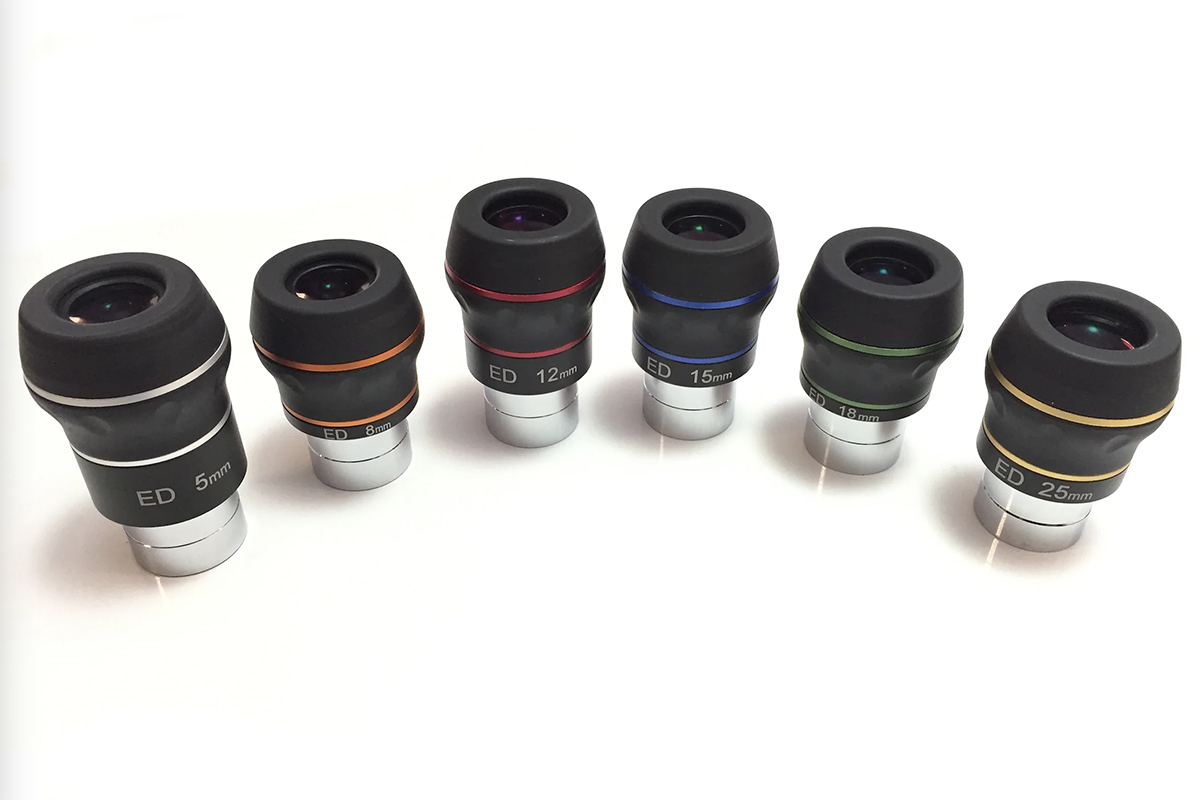Types of eyepieces
Huygens: It is made up of 2 lenses and is very common in beginner telescopes, as they are not of good quality. Provides an apparent field between 25° to 40°.
Ramsden: Somewhat superior to Huygens, but it is not of good quality either. It is also made up of 2 lenses and its apparent field reaches between 30° to 40°.
Kellner type I: This eyepiece is composed of simple achromatic lenses. It is a plano-convex type lens. Its apparent field of vision ranges between 35º to 50º and has better color correction.
Kellner type II: This eyepiece is also composed of simple achromatic lenses and has the same apparent field as the Kellner type I. Its main difference is that it is a double plano-convex type lens.
Plössl (Kellner type III): One of the most popular and finest eyepieces for amateurs. It consists of two achromatic lenses and provides an apparent field of vision between 35° to 50°.
Orthoscopic: An excellent type of eyepiece, composed of 4 lenses with a triplet. Their apparent field is between 35° to 50°, and they are commonly associated with Abbe eyepieces.
Erfle: Eyepiece with a very wide apparent field, between 50º and 70º. It consists of 3 achromatic lenses and good definition, but suffers from some aberrations at the edges.
nagler: One of the most prestigious eyepieces, and also one of the most expensive. It consists of an apparent field that can reach 82°, extremely wide, specially designed to work in Newtonian telescopes. It is a seven-element design with field-flattening lenses and great ocular relief, with very sharp and contrasted views.


